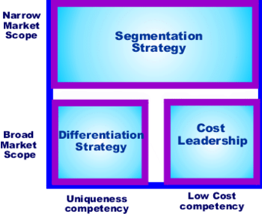Strategy requires vision – Product strategy begins with a vision that outlines in which direction product needs to go, how it will get there, and why it will be successful.
There are many tools and techniques such as Blue Ocean Strategy Framework, BCG Framework, & McKinsey / General Electric Matrix etc., which help in analysis of product portfolios. But there is very little help available for Product Managers in terms of tools and techniques to help build their product strategy. Although tools like SWOT analysis help Product Managers in understanding where their product stands viz-a-viz competition Product Managers mostly rely on their gut feel to identify the direction their products need to take.
General tendency to go about product strategy is to figure out what most important or strategic customers want and then just build that into the product. The issue with such approach is that organization’s most vocal or important customer may not be necessarily representing the entire customer base (current & potential). Such strategy (or lack of it) may not allow Business/Product Managers to broaden the horizons to build profitable business around their products.
Management Guru Michael Porter has laid out some generic ways to differentiate [1]
- Price differentiation
- Examples: Low-cost Manufacturers
- Product/Service differentiation
- Examples: Apple, RIM (Blackberry), Any successful niche retailers; (e.g. The Perfume Shop); or specialist holiday operator (e.g. Carrier)
- Focus based differentiation
- Examples: Small retailers featuring own-label or discounted label products.

Figure: Porter’s Generic Competitive Strategies
Assuming that your organization follows one of the above mentioned competitive strategy one can use following steps to come up with product strategy
- Identify the market & size of market you want to play in as per your corporate strategy
- Identify your products & companies strengths, weaknesses, & threats
- Identify areas where you see opportunities
- Build your strategy after choosing the areas of opportunities whereby you can leverage your strengths
- Create a plan on how you will get your product to reach the vision
- Identify measure of success at every major milestones
- Start working the plan to achieve the vision you have set out for your product
- Continuously evaluate how your product is performing as compared to measure of success you have laid out and revisit the plan if required
But again, that’s how I would do it…What steps would you follow to build your product strategy?